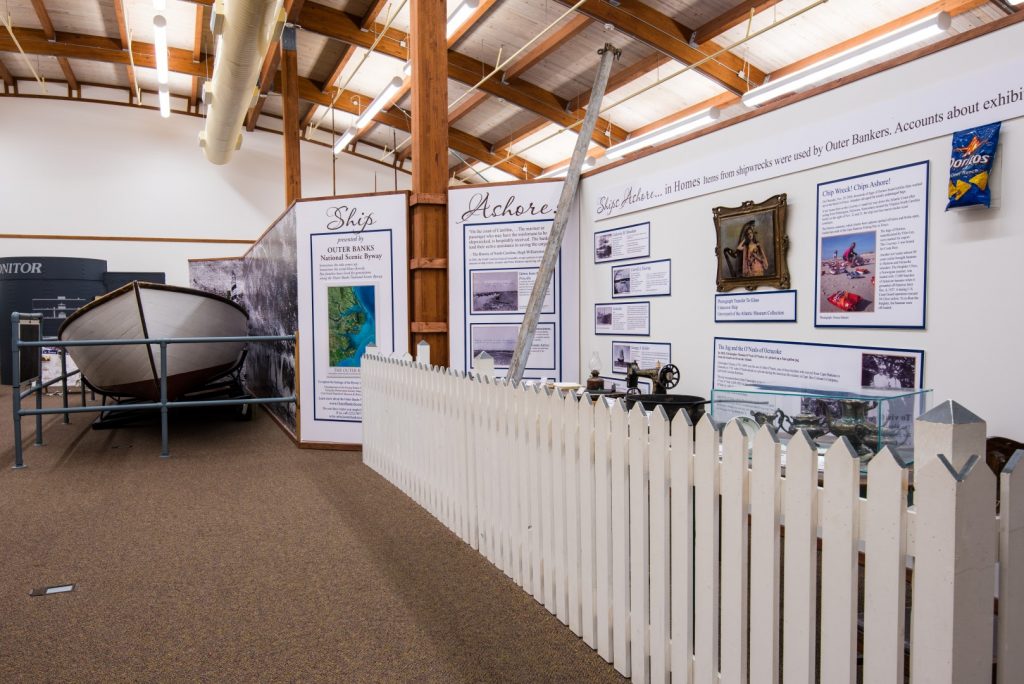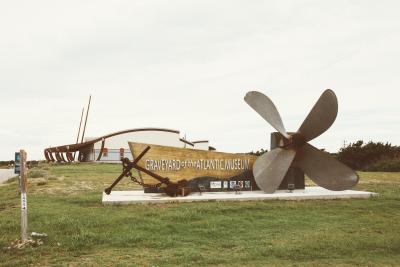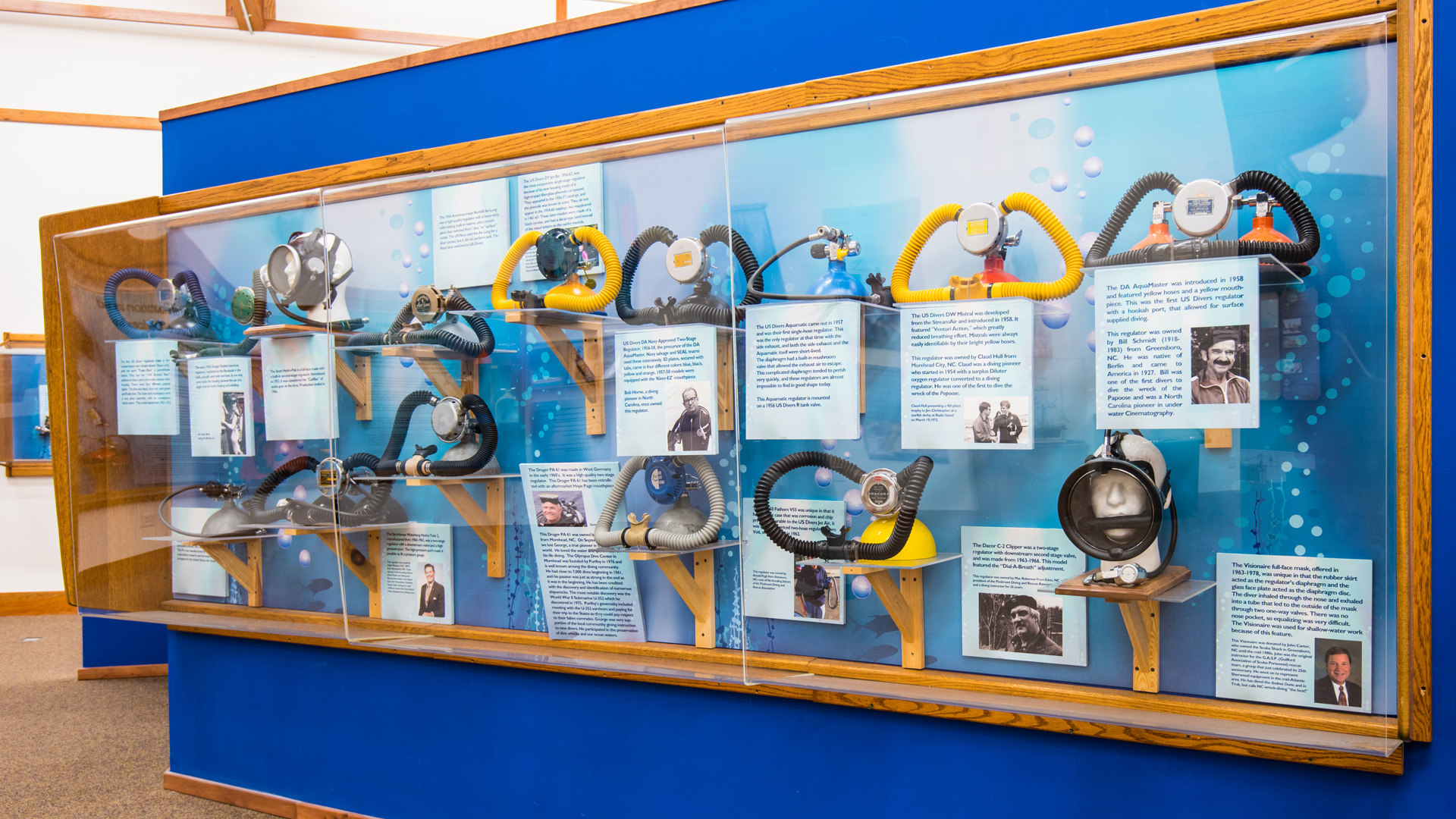
Images via the Smithsonian Institute and BBC Travel, respectively.

By 1973, the only reported place selling yaupon tea was the Pony Island Restaurant on Ocracoke Island. Pronounced Freh-nel, the Fresnel lens was a French invention that vastly changed the efficiency of lighthouses. Areas that it did not decline were isolated areas, like the Outer Banks, and continued to be popular through the end of the 1800s. Photos courtesy of the Graveyard of the Atlantic Museum. Yaupon tea grew wildly popular with colonists and was exported to Europe as well, but declined rapidly after the Revolutionary War.

One of its most famous concoctions was the "black drink." Receiving the name from its dark color, the black drink was oftentimes used as a ceremonial cleanser and made the consumer physically sick, earning it the Latin name "ilex vomitoria," even though it has since been disproved that it was the yaupon causing the vomiting reaction. Almost every Native American tribe in its vicinity consumed the yaupon tea in some way. The Hatteras village landmark, (which first opened in 2002), was slowly but continually stocked with new exhibits over. Today, the North Carolina Maritime Museums are part of the North Carolina Department of Natural and Cultural Resources.Did you know the only caffeine plant native to North America can be found in the southeastern United States? Found from Virginia down to the gulf of Texas, yaupon is a type of holly bush and was once widely utilized by Native Americans, and then colonists, as a caffeinated beverage. The Graveyard of the Atlantic Museum is in the middle of a transformation. The new maritime museum system now is comprised of the Graveyard of the Atlantic Museum in Hatteras, the North Carolina Maritime Museum in Beaufort and the North Carolina Maritime Museum at Southport. Also in 2007, the Graveyard of the Atlantic Museum was brought into the Department of Cultural Resources. The waters off North Carolinas Outer Banks entomb thousands of vessels and countless mariners who lost a desperate struggle. In February 2007 the North Carolina Maritime Museum in Roanoke was transferred to Roanoke Island Festival Park. Maritime Museum expanded operations to include branch museums on Roanoke Island and at Southport. When you walk in, there is a welcome desk immediately inside the door and they. The genesis of the Graveyard of the Atlantic Museum goes back to 1986, when Hatteras villagers decided it would make sense to have a facility to house artifacts from the wreck of the Civil War-era Monitor that had been discovered a decade earlier offshore their village.
#Graveyard of the atlantic museum free#
In late summer and early fall of 1999, the N.C. The museum offers free admission, and they accept (and operate off of) donations. In July of 1997 the North Carolina Maritime Museum was transferred from the N.C. Smith Watercraft Center was added in 1992. circa 1904, but did not become the North Carolina Maritime Museum in its present incarnation until 1984.The Harvey W. Recommended Reviews - Graveyard of the Atlantic Museum Map 59200 Museum Dr.

Fisheries Laboratory on Pivers Island, N.C. The North Carolina Maritime Museum began as a collection of natural history specimens in the U.S. Our brief history with longstanding maritime traditions

Each of the museums is unique, and offers year-round public programming, and free admission. Although one of the largest museums anywhere devoted exclusively to Africa, it is thousands of miles from the continent itself. This summer, researchers from Monitor National Marine Sanctuary and its partners visited and documented two of the wrecks that now rest on the ocean floor: the submarine USS Tarpon, and the passenger liner. More than just a collection of artifacts, the Graveyard of the Atlantic Museum is a premier cultural attraction for the Atlantic Seaboard and one of the finest, most innovative maritime facilities in the nation. They paint a picture of the history and maritime culture that includes fishing, boat building, piracy, decoy carving, life-saving, war, underwater archaeology, shipwrecks, boating, the seafood industry, and marine life, science and ecology. Welcome to the Royal Museum for Central Africa. The area off North Carolina is known as the Graveyard of the Atlantic, named for the many shipwrecks that came to an untimely end here. The three North Carolina Maritime Museums preserve, protect and present North Carolina’s coastal history. Welcome to the North Carolina Maritime Museums


 0 kommentar(er)
0 kommentar(er)
